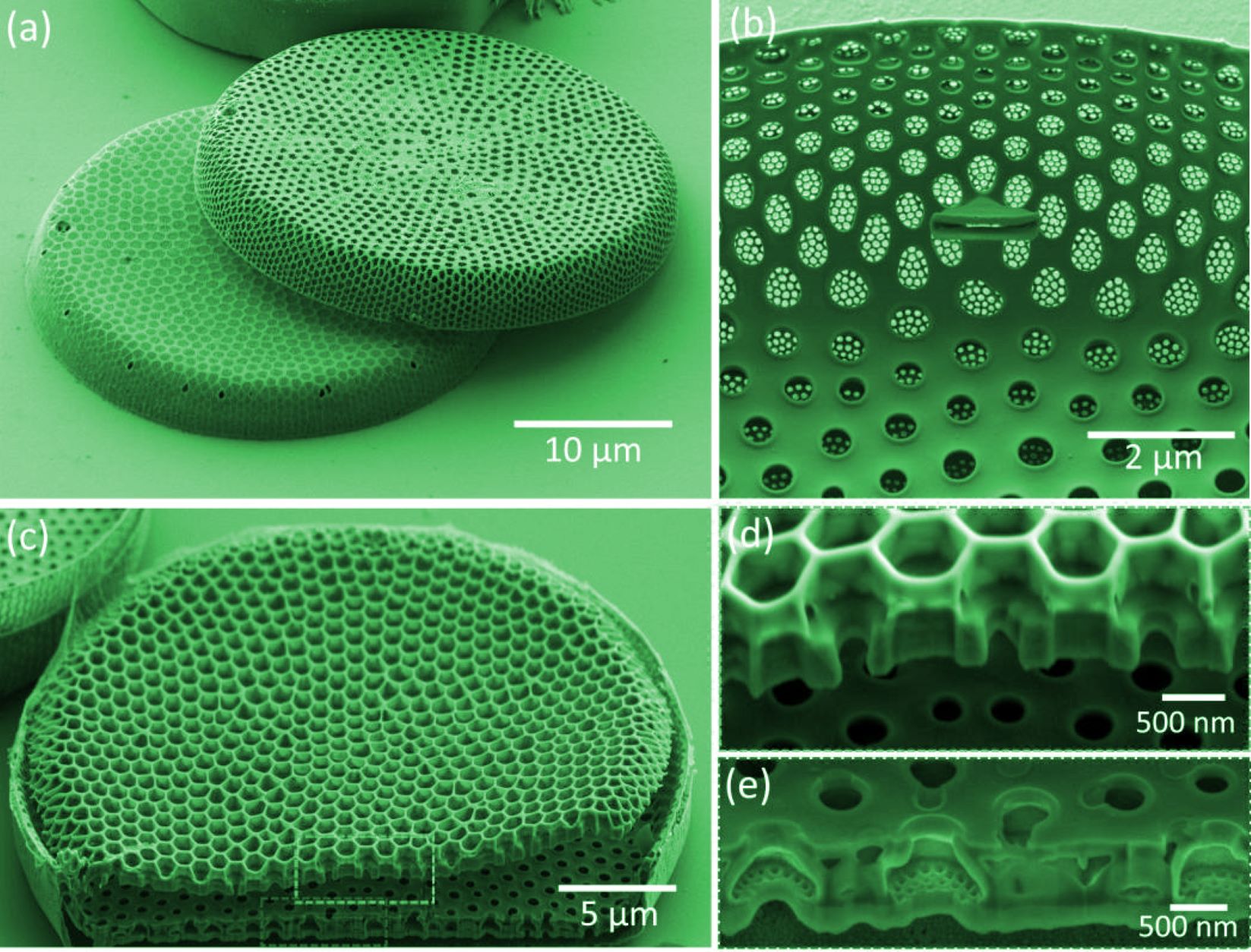Researchers at the Skolkovo Institute of Science and Technology (Skoltech) have uncovered a fascinating trick that microscopic algae might be using to gather light more efficiently for photosynthesis. According to a new study published in Optica, the secret lies in the algae’s beautifully intricate shells, which can naturally focus sunlight into hotspots inside the cell. It’s a discovery that could eventually help engineers design better solar panels, sensors, and UV-protective coatings.
Key Takeaways
- Scientists discovered that diatom algae use their patterned shells to manipulate light through a phenomenon known as the Talbot effect.
- The shell, or frustule, acts like a natural lens, focusing light into numerous concentrated points inside the single-celled organism.
- This ability probably helps the algae conduct photosynthesis more effectively, especially in the low-light conditions of deep ocean water.
- The findings could influence the development of nature-inspired technologies, including more effective photovoltaics and biosensors.
At the heart of the research is a particular kind of algae called a diatom, tiny, single-celled organisms that play a surprisingly big role in the Earth’s ecosystems. They’re found pretty much everywhere: in oceans, lakes, rivers, and even damp soil. These humble creatures are responsible for producing around 25% of the oxygen we breathe and account for roughly half of all organic material in the oceans.
What sets them apart visually is their shell, known as a frustule. Made of silica, basically glass, it’s rigid and covered in a detailed pattern of tiny pores. Scientists have long suspected that these ornate patterns weren’t just for protection or filtering nutrients. Now, it seems those suspicions were on the right track.
Focusing on a species called Coscinodiscus oculus-iridis, the Skoltech team discovered that the shell acts like a natural lens. It manipulates light through a phenomenon called the Talbot effect, which causes light waves to self-focus after passing through a repeating pattern, in this case, the shell’s pores. The result? Dozens of concentrated light spots forming inside the algae’s cell.
“We have shown that these algae’s frustules, with their intricate pattern of pores, exhibit what’s known as the Talbot effect,” explained Sergey Dyakov, the study’s lead author and Associate Professor at Skoltech Physics. He added that while the shell might not have evolved specifically for this purpose, the algae seem to have found a clever way to use it. Their light-harvesting chloroplasts may actually be sitting right inside these tiny light hotspots, effectively making the most out of every photon they can get, especially in dim environments like deep water.
So far, the conclusions are based on theoretical models and simulations, but the team is planning to test them further using a scaled-up artificial version of the shell to observe the light-focusing effect more directly.
This kind of insight is what drives biomimetic research, where scientists borrow ideas from nature to solve human engineering problems. And this one holds real promise.
“As we gain more insights into the properties of diatom frustules, eventually some of the uncovered mechanisms could make their way into photonic devices, biosensors, self-adjusting light-sensitive coatings, and photovoltaics,” said Julijana Cvjetinovic, a Senior Research Scientist at Skoltech Photonics and co-author of the study. She also pointed to the potential for designing artificial photosynthesis systems that could, theoretically, turn sunlight into usable fuel by splitting water and converting carbon dioxide.
Professor Dmitry Gorin of Skoltech Photonics summed it up well, calling diatoms “a striking example of another masterpiece of nature.” It’s a reminder that even in the smallest corners of the natural world, there may be solutions waiting to be found, if we know how to look.
Related FAQs
Q1: What are diatoms and why are they important?
A1: Diatoms are a type of single-celled algae found in water and soil. They are critical to the planet’s health, as they produce about 25% of the world’s oxygen and form the base of many aquatic food chains.
Q2: What is the Talbot effect?
A2: The Talbot effect is an optical effect that occurs in the near-field of a diffraction grating. When light passes through a regular, repeating pattern of holes or lines, it creates a self-image of that pattern at certain distances. In the case of the diatom, this effect focuses light into concentrated beams.
Q3: How can studying diatoms help in creating new technology?
A3: By understanding how diatom shells manipulate light, scientists can mimic these natural designs. This could lead to more effective solar cells that capture more light, highly sensitive chemical and biological sensors, and special coatings that can block harmful UV rays.
Q4: What is a diatom’s shell made of?
A4: A diatom’s shell, called a frustule, is made of hydrated silicon dioxide, which is chemically similar to opal or glass. This makes the shell both rigid and transparent.



















